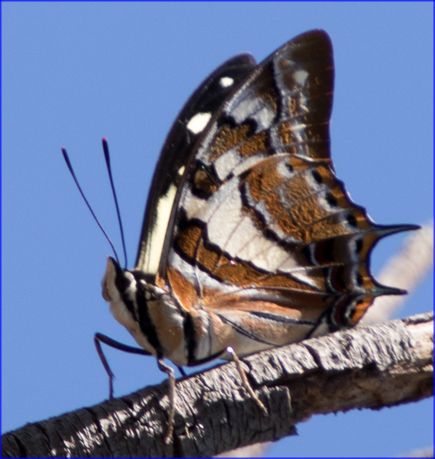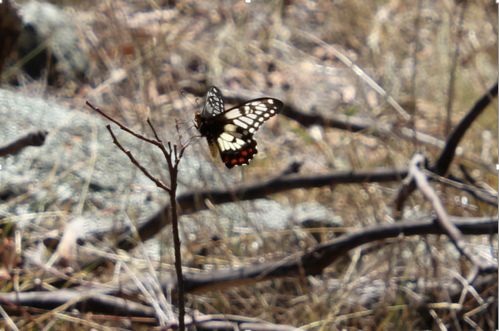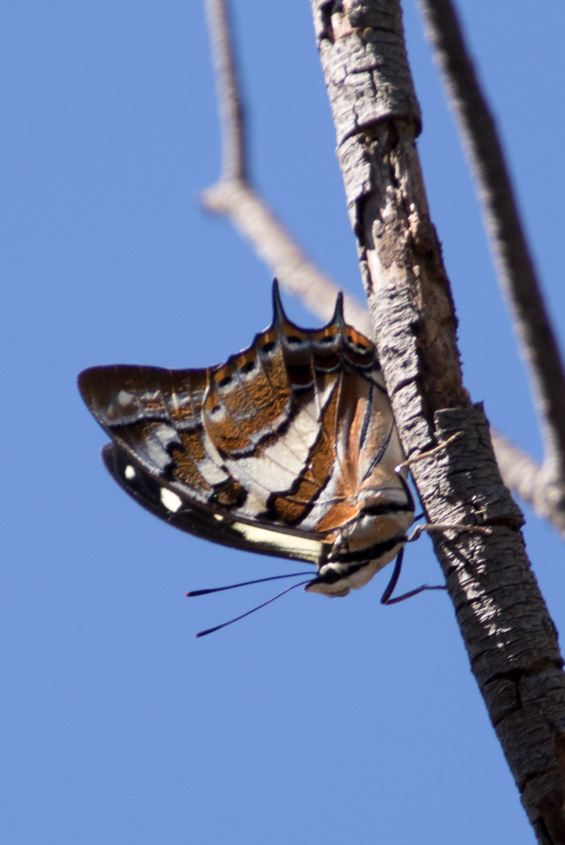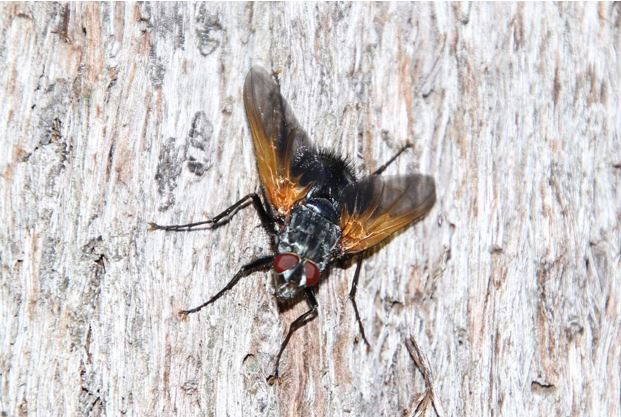  |
butterfly walk, 11 February 2018 |
|
Though many people did, one thing perhaps not thought of was to bring binoculars. Butterflies can be found at all levels; not just those at ground level like the Grass Blues and Common Browns. Spotted Jezebels and others prefer treetops. However, they all tend to 'hilltop': that is, to migrate to the highest point for their mating rituals. Therefore hilltops are a great place to look for butterflies. The Pinnacle, Black Mountain and Mt Ainslie, inter alia; the best place to see them. The male butterflies fight each other for mates on the top of hills – lots of swirling around and dogfights, rather than ‘tooth and claw’: so we're told. The walk attracted over 38 people with a number of children taking advantage of completing a page in their Nature Play Passports. Participants included some regular Fotpin members, Field Naturalists, butterfly watchers, some who knew nothing about butterflies, and others. Suzi’s preamble said the butterflies she expected to see were Cabbage White, Painted Lady, Yellow Admiral, Meadow Argus and Grass Blue, (all spoken while a Cabbage White fluttered nonchalantly around a bush behind Suzi's back - to the delight of the participants). These are butterflies you have probably seen in your own garden but can also see at the Pinnacle. Cabbage White – medium size and mainly white (scourge of the Brassica family, but eclectic in its tastes). Painted Lady – medium size - brownish but with brightly coloured upper wings. Common Brown - medium size – brownish and similar to the Painted Lady in colour, but more tapered wings and with large ‘eye spots at the end of its wings to confuse predators. Grass-blue (in grassy areas, including your lawn) - small silvery blue/mauve. Dainty Swallowtail - (similar to the Citrus Butterfly/Orchard Swallowtail but, well, daintier– white and black with red and blue spots on the back of the wings).
There are others you probably won’t have seen that specialise in particular plants: a small dark butterfly that relies on mistletoe; another that enjoys Kurrajong; and one that uses parasitic plants such as Exocarpus (Cherry Ballart). Check out these plants when you are next at the Pinnacle. Suzi provided information on the interconnections of each shrub species and plants, which was a way Fotpin members could share what they’ve learned since restoration of the reserve began. Immersion in the natural untidiness of the Australian bush helps banish misconceptions some of us apply to nature around Canberra. At the start of the walk at the species-rich Dungowan Tree, Suzi explained about the importance of mistletoes for butterflies. Though they have a poor reputation, mistletoes are vital for healthy habitats of some butterfly species. Though we didn't see as many as expected, Suzi explained that the Common Brown butterfly has one of the longest breeding periods, with the males emerging in early spring, when you will mostly see males. Then the females emerge and you will see almost equal numbers of males and females, but the males are shorter lived and begin to fade in colour, sometimes so pale they can be mistaken for Cabbage Whites. The females retain their eggs until conditions are ideal for laying them-usually late Autumn-at which time females will be predominant. This breeding behaviour is common in other species but because they are much shorter lived, the predominance of males vs females is not so obvious. Some species only live for two weeks so observing them can be very opportunistic. Despite the conditions, we didn’t see as many butterflies as hoped, however Suzi reported a total of 11 species: Orchard Swallowtail; Dainty Swallowtail; Cabbage White; Spotted Jezebel; Common Brown; Tailed Emperor; Meadow Argus; Australian Painted Lady; Broad-margined Azure; Two-spotted Line-blue; and Common Grass-blue. We also saw evidence of the Bronze Flats breeding on a small stand of Kurrajongs, but didn't see any adults. As expected, our best sightings were when we got to the top of the Pinnacle as three species were 'hilltopping'. A strong, gusty, north-westerly had sprung up, which threatened to blow our hats to Tuggeranong. Nevertheless, a few Dainty Swallowtails danced on the gusts apparently unaffected by the wind. While these barely perched, a Tailed Emperor decided its best defence against the winds was to perch on a branch and grab on for dear life giving us all a great chance to observe and photograph. However, the most significant sighting was (very unusually), an obliging Broad-margined Azure, (which are normally very hard to see perched, let alone as close as we saw!).
While not particularly productive for butterflies on the day, we enjoyed seeing some, and learning about their habitats and behaviour. The undersides of wings gave us lessons in camouflage. We also saw several moths; they’re even more successful at vanishing among the summer vegetation. Once you ‘get your eye in’, you are focussing on small insects, above and around trees or understory plants and on grasslands. They move rapidly and irregularly, then settle briefly on a plant, looking like a leaf or similar. This means you also get to notice other small insects such as dragonflies, flies and moths: even a tiny sandy-coloured moth (Geometrid sp?) on the track. The Pinnacle Trig was a prime example as we also saw a large Bristle Fly clinging to the 'one tree', several Bee Flies and some Hoverflies.
Thanks to John Brannan for organising this walk. There was constant sharing of observations, experiences, knowledge and the tangible joy of being outdoors and active. Every time we stopped, the children inspiringly found countless organisms, objects and observations to stimulate their imaginations. So the next time you visit the Pinnacle, look out for butterflies – it is well worth it, and a different way to enjoy the world around you. † The walk was led by Suzi Bond, coauthor, with Steve Holliday and John Stein, of the popular Field Guide to the Butterflies of the Australian Capital Territory. She has surveyed butterfly populations and led walks on several Canberra Nature Reserves. |
||||||||||||||||||||
© Friends of The Pinnacle





